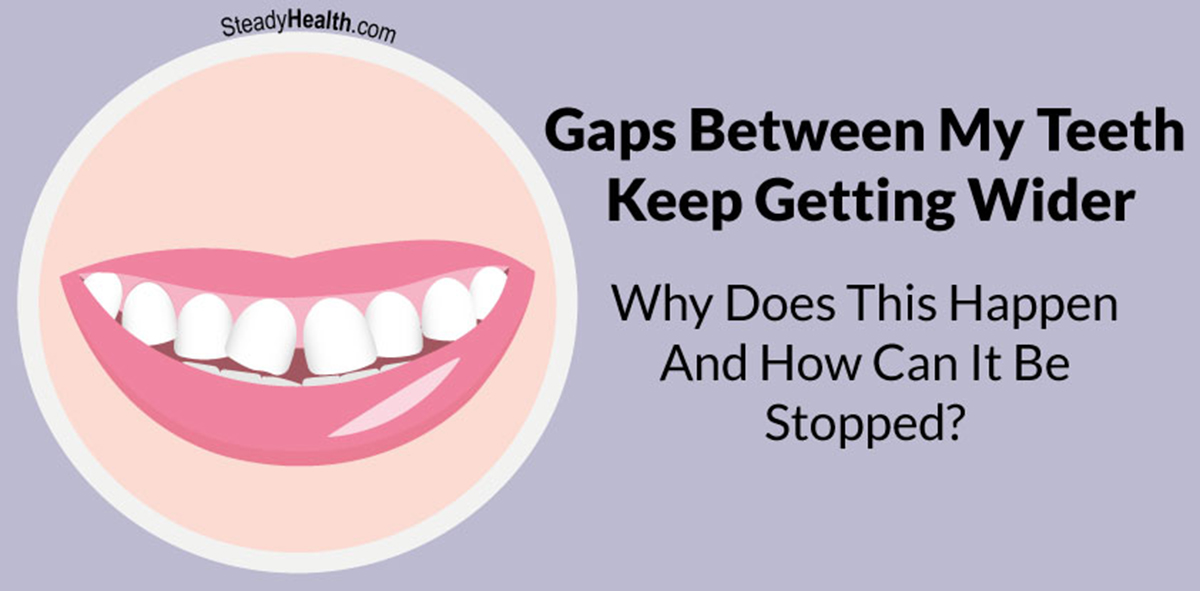Do Surrounding Teeth Continue Moving Around a Gap
It can be quite disconcerting to see the gaps between the teeth keep on increasing over time. It suggests that the dentition is unstable and there is some disease process that is underway. Here are the possible reasons and treatments for this to happen.
One of the main reasons why gum disease remains undetected for so long is because it does not cause pain [1]. It has to be recognized through other symptoms or during routine bleeding gums treatment by the dentist.
These symptoms may not be easily apparent to the patient either because they are not trained to associate them with gum disease. One such symptom is a widening gap in the teeth. Let us answer some of the common questions that patients have with respect to the gap between their teeth.

Why is the gap between my teeth increasing?
Having gaps between the teeth is not something unusual. It can happen for a variety of reasons which are not considered abnormal. If, however, the gaps between the teeth are increasing then it indicated that there is something not normal going on.
The most common reason for the gaps between the teeth increasing is due to the presence of an empty space after an extraction [2]. Teeth which lie in the middle of the arch must be replaced using a bridge or implants. Otherwise, the natural tendency of the teeth is to drift into these open spaces causing an increase in spacing between the teeth.
The other very common reason is gum disease [3]. The way that gum disease works is that it causes a progressive destruction of the bone around the teeth. As the support for the tooth keeps decreasing, it is unable to withstand the chewing pressure that it normally would and starts to drift out of position [4].
This process is called pathologic migration and it can wreak complete havoc with the position of the teeth.
Some other symptoms that are associated with pathologic migration include the teeth becoming mobile (or loose as patients often refer to them), loss of teeth, bleeding from the gums, swelling around the teeth, and the development of pockets around the teeth [5].
Another cause for increasing gaps in between the teeth is due to a relapse of orthodontic treatment. Teeth can be moved into the ideal position with orthodontic treatment but once the braces are removed, they move back into their original position [6].
Such a situation is quite common and could be caused by improper orthodontic treatment, insufficient retention period, genetics, or other occlusal factors.
How to stop the gap between my teeth increasing?
The only way to stop the gaps between the teeth from increasing is by getting the correct treatment for the underlying cause. If the cause is determined to be an unreplaced missing tooth/teeth then that must be treated first.
Depending upon the time the tooth has been unreplaced, the amount of movement between the teeth may be severe and a lot of dental work may be needed to adequately replace the missing tooth [7]. The options for permanent replacement of missing teeth keep on reducing with time because the bone surrounding the area keeps getting destroyed thus making the placement of a dental implant more complex.
If the gaps in between the teeth are increasing due to worsening gum disease then periodontal treatment is the only option. This will begin with scaling to remove all the plaque and tartar from the surface of the teeth and then include gum surgeries.
The purpose of performing gum surgeries is to remove all reservoirs of infection that may be present and to stop the disease process that is destroying the bone around the teeth. The use of bone grafts and membranes to provide additional stability to the teeth is also a good idea but they cannot be used in all situations [8].
The success of periodontal treatment also depends upon the post-operative care that the patient is able to provide. If the level of oral hygiene maintenance can be improved dramatically and a regular professional cleaning regimen can be adhered to then the gum disease can be stopped from progressing. This will directly result in a reduction of the increase in gaps between the teeth [9].
For people that are seeing a relapse in treatment after having an orthodontic intervention, the first step is to figure out why this relapse took place at all. Maybe the duration of the treatment was insufficient or maybe the teeth ended up in a position where they could not be stabilized. Maybe there was uncontrolled gum disease present which made the teeth unable to withstand the chewing forces in their new position. Maybe the patient did not wear the retainers for long enough.
All of these conditions have a solution that can be arrived to but getting orthodontic treatment again is also likely to be required [10].
Conclusion
Having gaps between the teeth can be a very difficult problem to solve for the dentist. Too often, the problem is far more complex than it first appears and requires lengthy, complicated treatment. Like all things, though, the earlier intervention is sought out, the more likely it is that a successful outcome will be achieved.
Source: https://www.steadyhealth.com/articles/gaps-between-my-teeth-keep-getting-wider-why-does-this-happen-and-how-can-it-be-stopped
0 Response to "Do Surrounding Teeth Continue Moving Around a Gap"
Post a Comment